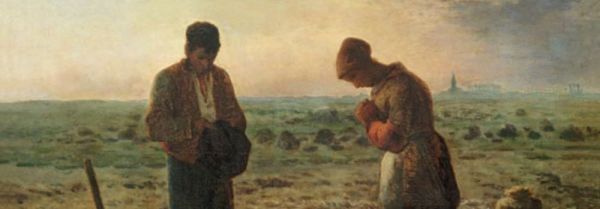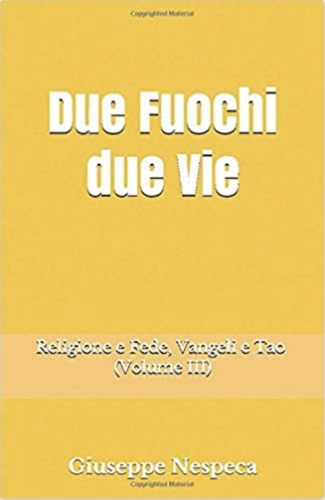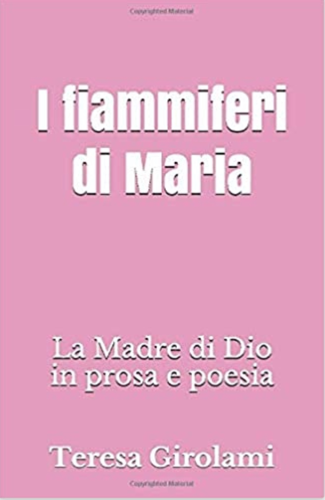(Jn 15:1-8)
The allegory of the vine and the branches describes the Presence of the Lord in the midst of his own. He is the source of intimate life and works.
The imperative to believe in Him (c.14) becomes a requirement to abide in Him [cf. Jn 6:56: Eucharistic theme of the "one body"].
The vine is a plant that demands much attention. In the biblical texts it is taken as a symbol of God's care for His people, and conversely its destruction depicted ancient national calamities.
Jesus uses the image of the vine and the branches to convey a teaching on familiarity with Him and fraternity between disciples, illustrating the deep bond.
Intimate union, common nourishment, solidarity and the continuity of the bond require careful and constant work, including cutting and pruning, because not all shoots and sprouts bear fruitfulness.
But beware: divine Love is an impulse that demands that we allow ourselves to be carried. It drags; it takes us and becomes nourishing sap. It invests us, purifying us.
It is not a dimension to be understood as an effort (essentially ours) but as a ... being grasped and becoming involved in the motion of the life of Grace.
In comparison with the allusions of the First Testament, one notices a substitution: although the vine-dresser continues to represent the Father, the vine is no longer a figure of the people, but of Jesus.
And 'bearing fruit' is a frequent expression indicating only Love: the true result that God expects, the unique work to be achieved in all our works.
Christ's abiding in the disciples, his union with each one, is essential to living the same divine life on earth.
Faith-love incorporates and is contagious. Where it encounters resistance, it is this very obstacle that will incite it to greater purity, hence to greater vigour (v.2).
The man, on the other hand, left to himself does not prolong the influence of Christ; he does not overcome the barriers of nomenclature and normality.
He who imagines himself to be self-sufficient - by breaking the union - cracks the Mystery that envelops him, and will fall prey to his own festering clusters.
But it is also true that a well-bred vineyard is intrusive by its very nature: it blatantly demonstrates a full willingness to express... love (fruit, taste, life).
In short, if mission is marking time today, it is because it has already lost its dynamic vitality: adaptation plans or narratives and external reform will not suffice to resurrect it.
It is the vital encounter that brings out the waves of strength and friendliness.
Over the years, the Vocation has guided and led us to a personal way of being and a characterising sphere of relationships.
Still the Lord continues to call us, so that by entering into his language [unrepeatable, commensurate with each story and sensitivity] we are removed from conditioning that does not belong to us.
Jesus invites us to take care of the codes of interiority, and from them to assume the resolute impulse to which we entrust our choices and which has already guided us to grow.
From the dawn of our history and personality, He alone continues to be the intimate and gushing source of development - even of the imprints we had withheld.
If we had relied on externality, the soul would have dissipated its sap, losing the essence that belonged to it and specified it.
Thus we would not have encountered ourselves and would never have nourished ourselves with the most efficient constituent resources, which now together give balance, greater wholeness, the ability to judge in a situation, amiable transparency.
One becomes oneself, one becomes a well-rounded person, one becomes a missionary, in the same way: by understanding that a lymph, a stimulus, runs through one's veins, which comes from One who knows more than us and opinions.
There are plants in the undergrowth, others towering up; still others, sneaking into the empty areas and mysteriously left to the full light are growing at a much faster rate than those that have been planted and installed for a long time - habitués to the point of seeming homologated.
The magic of creation - vines, shoots - speaks of another realm, of a Logos that relates to us and wisely directs its flows and life forces.
This is what happens in the Spirit, which internalises, calls, nurtures, transmits balance or prophecy, and generates the awe of wholeness and oneness.
How did those seeds (in the example I have in front of me, a double pine and a single pine) take root in precisely the right, intermediate and characteristic places - both aesthetically and in terms of utility, density and breadth? Not even I could have thought of them so neatly arranged; so perfectly aligned in proportion, size, volume and scale.
Only the Hidden Ally sees well the whole, the structure, the functionality and the details of our fibres.
He knows where to lead, and how to nourish us to regain the Ego, the qualitative unity of being.
He does this by sowing, injecting, regenerating, calibrating the energy of his and our Dream. At a convenient pace, and taking care of the rational utilitarian banality of our projects.
Unceasingly refocusing personal bearing, self-awareness, spontaneous inclination.
As well as by detaching the soul from those who in a thousand ways want to leave us in ignorance of the Creatural Way, to hold on to the commonplaces and totems of their habitual, unnerving world.
This while the Spirit separates our multifaceted thinking from false, one-sided guides [old-fashioned and narrow-minded, or hysterical and sophisticated, but disembodied].
The top of the class perhaps stalk, press, and plagiarise, distracting us from the non-conformist Dialogue with the unrepeatable task of personal life.
In the Gospel passage, the Creator-farmer cuts and purifies, to reconnect.
Jesus speaks of "Vine the true one" (v.1): He alone is the authentic seed of the People planted by the Father.
He means that deviant teachings were being inculcated around, and false vines were being buried or displayed - like the fabulous one filled with golden vines on the door of the inner sanctuary of the Temple of Jerusalem.
The lifeblood does not flow from riches, nor from doctrines and disciplines - not even from the grand, impressive magnificence of the old cult.
Not even from spineless, à la page fantasies.
The Farmer's interest is that the Vine bears more and more Fruit i.e. Love, nothing else.
In such a trajectory, the Farmer who knows what to do, 'cuts' (v.2) [also so that there are no gangs, no organised marpions. They who absorb the energies of his people [milked and sheared] without the slightest thought of communicating - in turn - authentic life to others.
First they 'cut off' what was thriving in the past but would no longer give anything.
We realise this in the time of the crisis, which unmasks and overturns nagging and importunate positions, mortifying development.
Then he "purifies" (v.2: Greek text), that is, he proceeds as the good peasant does, to a second light pruning of the shoots of the vine; detaching those that absorb sap but thicken too much and do not have the right vitality [so as not to take nourishment away from the propulsive points].
This passage has often been interpreted as an invitation par excellence to embrace a spirituality of 'pruning' [the term in the Gospels does not exist] that makes no sense from the perspective of Faith, that is, of Love.
In ancient religions, it is the subject - the "branch" - that has to focus on itself, identify its shortcomings, faults and vices, and "prune" them.
In contrast, only the Father-farmer knows how to identify the harmful elements, the parasitic ones with no future, which are not worth continuing to support.
He acts in the reality of our path, as one would do with an antiquated and intimately corrupt papier-mache construction [as well as, with fashionable fantasies, which lead to emptiness].
Life in Christ does not concern itself with external limits, indeed it avoids making the [renegade!] flaws of the spiritual life the protagonists.
Such a configuration would be obsessive, inconclusive, because settled on an image of sterile 'perfection' that God is not interested in.
Rather, it will be an astonishment to observe how on the path of Faith precisely the uncertain souls, their unsteady steps and sides considered obscure, can hide the true Pearls of the world.
A spontaneous Power, the mystery of images that spring from the depths of vocational roots and reactivate energies; the multi-layered work of a radical, innate essence that accompanies us [immanent being and knows more about it than we do] are energies all capable of nourishing and correcting any geometry at the table.
How not to produce irreparable damage? By giving in to external dirigisme.
The Father takes care of the impediments, not the individual branch, nor other branches - veterans, experts, veterans that is.
Though higher, bigger... elected to life, they would not provide the right vital mood, nor organic bonding: they would only present us with buried content, and the bill.
To internalise and live the message:
Which lymph satiates you, the external one?
What mundane, normal geometry do you follow?
What is your idea of improvement in the Faith?












